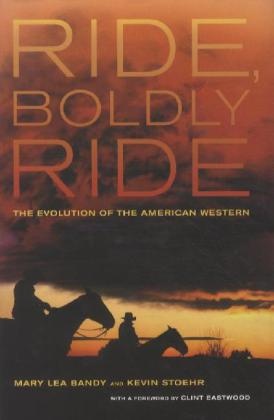Ulteriori informazioni
Zusatztext "The authors are authorities in the field of cinema, and their level of analysis is very high. The scope of cinematic knowledge is broad and deep, and the writing is clear and engaging. . . . Highly recommended for all readers." Informationen zum Autor Mary Lea Bandy was Director and Chief Curator of the Department of Film and Video at the Museum of Modern Art in New York. She has co-edited several books, including Rediscovering French Film , Jean-Luc Godard: Son + Image , and The Hidden God . Kevin Stoehr is Associate Professor of Humanities at Boston University. He is the author of Nihilism in Film and Television and co-editor of John Ford in Focus . Klappentext “A sweeping, insightful account of this most rich and resilient of movie genres. Bandy and Stoehr rescue the Western from the oversimplifications of much recent ideological criticism and present the form in the full range of its emotional complexity and cultural significance.” —Dave Kehr, author of When Movies Mattered: Reviews from a Transformative Decade “Mary Lea Bandy has spent decades using her inestimable knowledge and innate generosity to open audiences' eyes, encourage other scholars, and campaign for the preservation of film. In Ride, Boldly Ride , she turns her always illuminating analysis to the American western, finally giving it the breadth and depth it has long deserved.” —Cari Beauchamp, author of Without Lying Down: Frances Marion and the Powerful Women of Early Hollywood “ Ride, Boldly Ride has a rare ease and opinionated knowledge about its subject. In this first full-length overview of the Western genre published since the 1970s, Mary Lea Bandy and Kevin Stoehr cover a fine mix of canonical classics and little-known films worthy of more notice. With their engaging and clear style, Bandy and Stoehr make the reader eager to seek out the films covered here, or to seek them out again.” —Scott Simmon, author of The Invention of the Western Film Zusammenfassung A study of the Western that covers its history from the early silent era to recent spins on the genre in films such as "No Country for Old Men", "There Will Be Blood", "True Grit", and "Cowboys & Aliens". It also examines various forms of genre-revival and genre-revisionism that have recurred over the years. Inhaltsverzeichnis List of Illustrations Acknowledgments Foreword Introduction 1. Diverse Perspectives in Silent Westerns: Landscape! Morality! and the Native American 2. Not at Home on the Range: Women against the Frontier in The Wind 3. "He Went That-Away": The Comic Western and Ruggles of Red Gap 4. Landscape and Standard-Setting in the 1930s Western: The Big Trail and Stagecoach 5. Indian- Fighting! Nation-Building! and Homesteading in the A-Western: Northwest Passage and The Westerner 6. Howard Hawks and John Wayne: Red River and El Dorado 7. The Postwar Psychological Western (1946- 1956): My Darling Clementine to Jubal 8. John Ford's Later Masterpieces: The Searchers and The Man Who Shot Liberty Valance 9. The Existential and Revisionist Western: Comanche Station to The Wild Bunch and Beyond 10. Eastwood and the American Western: High Plains Drifter! The Outlaw Josey Wales! and Unforgiven 11. Coda: From Lonesome Dove (1989) to Cowboys and Aliens (2011) Notes Bibliography Index ...

